In the context of the war in Ukraine, drifting sea mines have become a problem faced by all countries with access to the Black Sea, and Romania is no exception. Reporters from Info Sud-Est and G4Media were on board the minelayer 274 on a research mission on Thursday, where they witnessed the simulation of a sea mine neutralisation procedure.
Standard training and research measures
As soon as they left the port, those on board were greeted by one of the security realities that NATO ships are faced with. A small craft swerved towards the minelayer, simulating an attack on it, to which the military on board responded with weapons at the ready. Of course, the exercise did not involve the actual use of munitions, but the soldiers assumed their battle positions anyway.
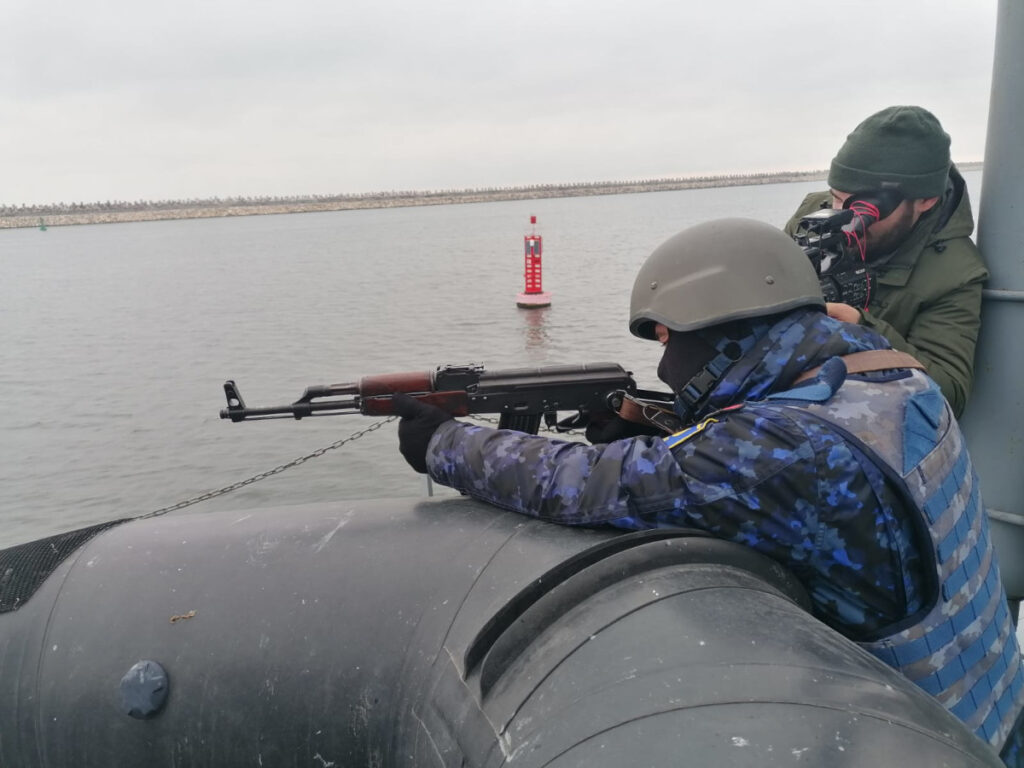

Such exercises might seem redundant for a Romanian ship in the port of Constanța, but Colonel Corneliu Pavel, spokesman for the naval forces, explains that the procedure is standard not only for Romanian ships, but also for those of NATO allies, and is motivated by past negative experiences:
“It is a standard operational procedure that is implemented on board NATO ships… because it has happened that some NATO ships, our partners’ ships, when entering some ports in the Arabian Sea, have been attacked. There has been material damage and loss of life on board the ships. Since then, this procedure has been in place at NATO level,” explained the colonel.

The reason for the sinking, however, is a conflict much closer to Romania’s borders and territorial waters. Russia’s invasion of Ukraine has created a complicated security situation in the Black Sea, triggering an immediate response from the authorities.
“Today’s sea sortie of the 274 mine sinker is part of the plan of systematic actions to search the maritime space by military vessels of the Romanian Naval Forces, an action plan that has been implemented since the war in Ukraine began last February,” adds Corneliu Pavel.

Since the start of Russia’s aggression, he says, 69 mines have been destroyed in the Black Sea, more than 50 of them by Ukrainian forces. But neighbouring countries have also had to take such action. Since the start of the search plan, Romania’s naval forces have had to neutralise five mines drifting in their area of responsibility from Ukraine. Bulgaria, Turkey and Georgia have also had to deal with similar situations.
Sea mines – How they reach Romanian waters and how they are destroyed
The equipment used, the necessary safety measures and the procedure for neutralising a discovered mine are explained by Captain Sorin Machidon, in charge of the team that carried out the exercise at sea.
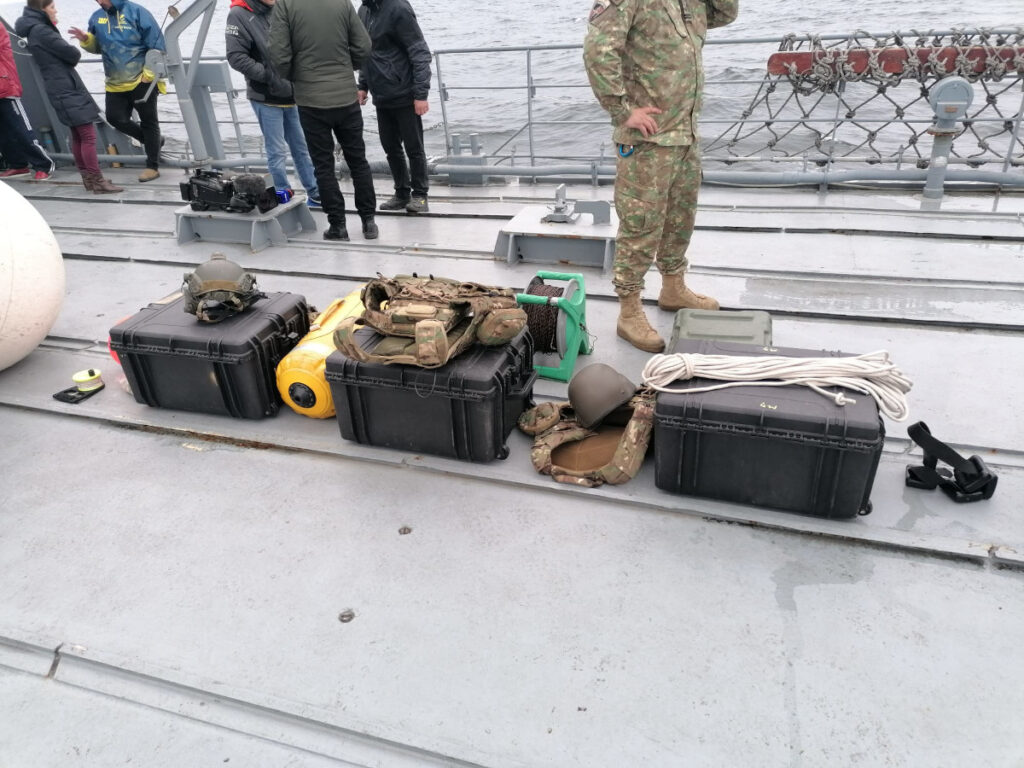
“Most of the time it is necessary to have a team of two divers who enter the water and mount the explosive charge on the body of the mine. This charge is then detonated electrically. They literally use a cable that stretches across the surface of the water to a safe distance from where we can initiate the detonation process,” explains the captain.
“We have three main categories of equipment: diving equipment, protective equipment and mine intervention equipment – different mine grappling systems, current velocity measurement systems, water depth measurement systems, fire initiation systems, i.e. transmitting an electrical pulse, more equipment that we actually use in the mine detonation process.”
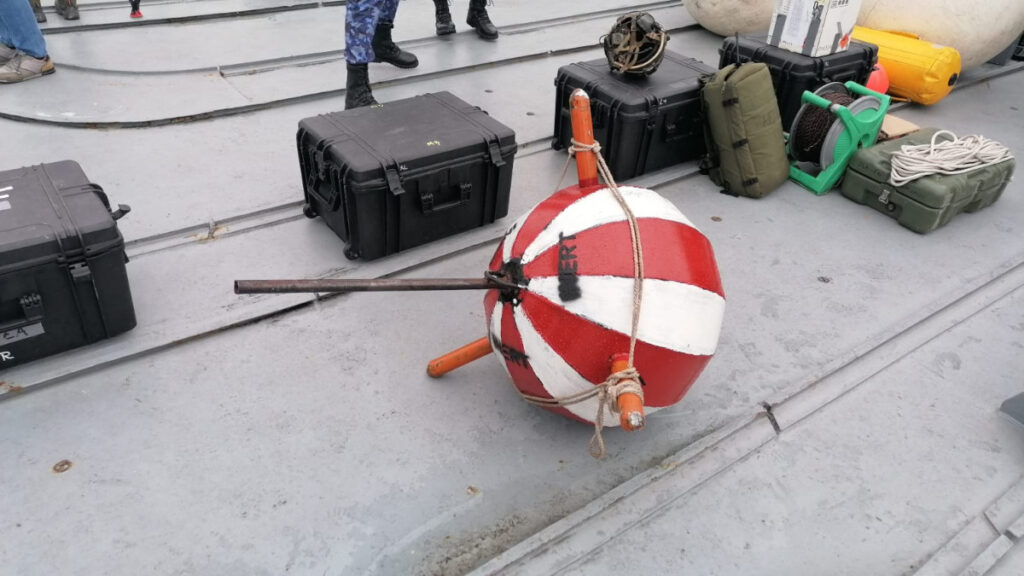
According to the captain’s explanation, nothing can be left to chance in an operation like this. Even if the small craft used for such missions should not, in theory, give a strong enough shock to detonate a mine, the procedure is to avoid even small accidental touches and minimise contact as much as possible.

For the same safety reason, each intervention is tailored to the individual conditions under which it takes place. From the size and type of mine to the weather and how rough the sea is, every factor has to be taken into account. From an intervention that can take more than an hour, the exposure time, during which the dive team is within range of the mine and manipulates it to prepare for destruction, takes no more than a few minutes.
“It’s a dangerous time and we’re trying to keep it to a minimum, but we’re not going to rush the procedure just to get out of the area as quickly as possible so we give up safety,” the captain points out.

In addition to the mines coming out of the dam created during the current conflict in Ukraine, Sorin Machidon explains, Romanian divers are also faced with another situation: mines coming out of historical dams, in particular from the Second World War, which from time to time appear in the sea and can pose a danger. Although they are extremely old, they are treated with the same seriousness as modern mines and the procedure and safety measures do not change.
In fact, EOD specialists were faced with such a situation less than two weeks ago, when such a mine was caught in the net of a Romanian fisherman and well 274 intervened to destroy it.
Regarding the current context of the war, Sorin Machidon also points to the uncertainty created by the conflict. The Romanian authorities do not have exact data on the mines that have been laid since the beginning of the war and, at the same time, no one can say how many of them have drifted away from their original position.
Even if their numbers were known, however, their discovery is another story altogether. One can only make general approximations of the direction in which a mine might move, based on how sea currents behave, and searching for them specifically over such a vast area would be practically like looking for a needle in a haystack, but without even knowing whether you would find more needles or whether they are even there. Finding and reporting a mine, often by commercial boats, is therefore a matter of chance.
According to Captain Machidon, the danger of newly laid mines could persist over time, even after the war in Ukraine is over. There is a possibility that Romanian forces may have to neutralise these devices even years after the conflagration, just as the 1940s ‘relics’ that surface from time to time.
Safety comes before anything else
They say a picture is worth a thousand words – by that standard, a real-time demonstration is invaluable, and the military decided to show reporters aboard the well exactly how a neutralisation operation goes. To that end, they dropped a much less smelly “mine” into the water, but treated it with all the seriousness of a real explosive device, to show every step of the process, from initial sighting to destruction.
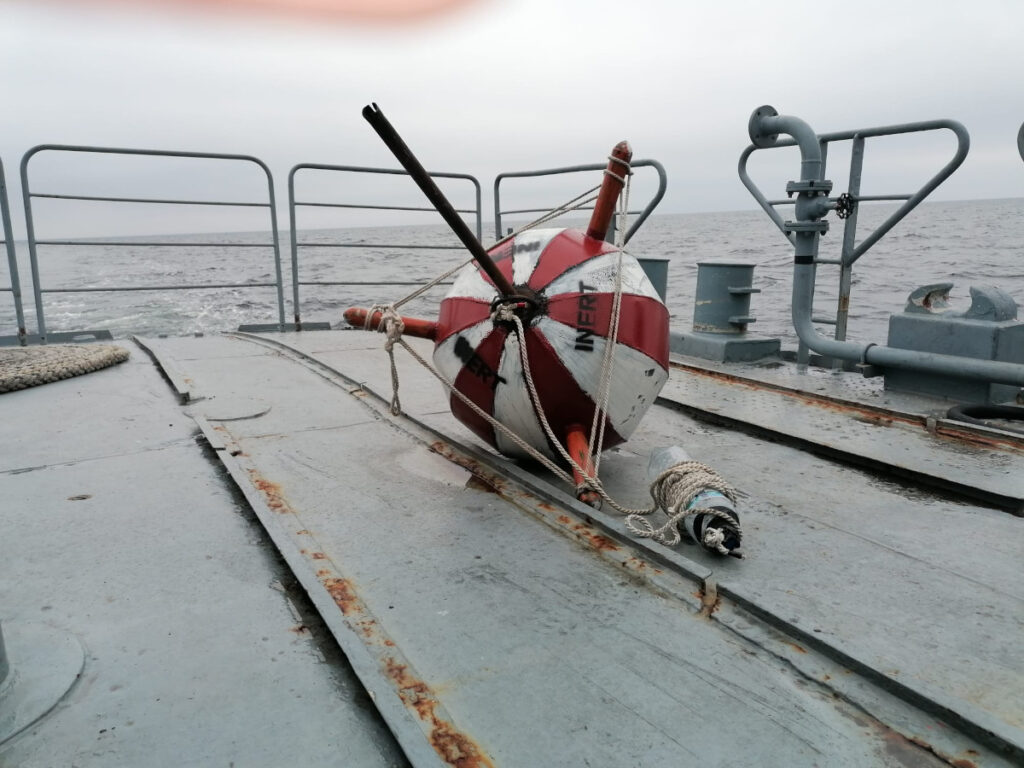
With the danger once spotted, the dive team immediately sprang into action, and Captain Machidon went through the protocol of assigning tasks and explaining the expectations he has of his team. While the atmosphere was serious, the orders were also accompanied by encouragement and assurances that everything would go according to procedure that the EOD divers already knew well after countless hours of training.
“Respect safety measures and don’t take risks, that’s all I want from you”, is the exhortation with which the experts were sent on the water.
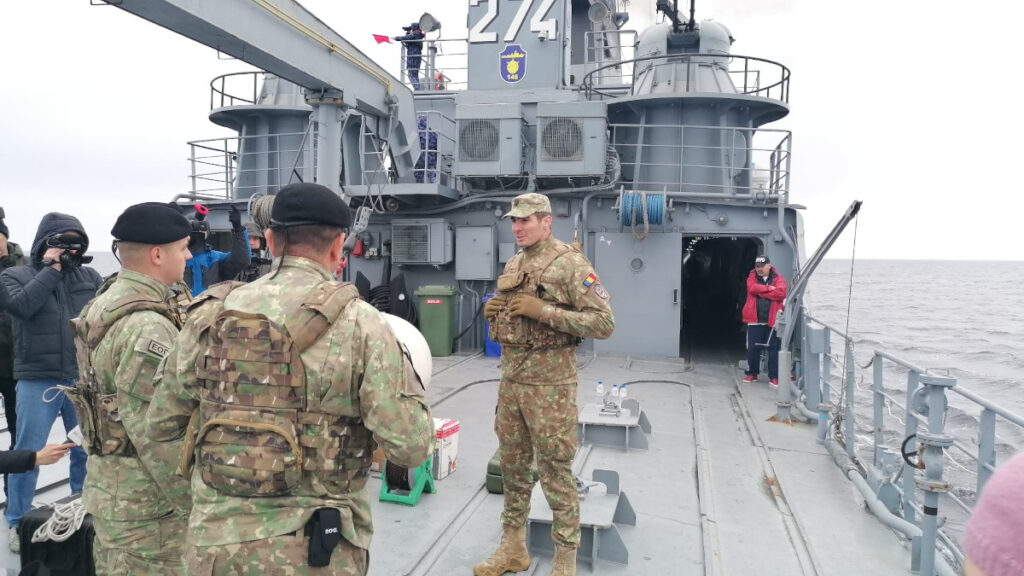
Of course, before setting off, thorough preparation is needed. Already accustomed to the responsibility of destroying particularly dangerous objects, EOD divers show no signs of nervousness in front of the cameras as they gear up and prepare.
One team member dons a black diving suit. With a tactical vest to carry all the small tools he might need and a dagger in case he has to get through an obstacle like a stray fishing net, it’s his job to get as close to the mine as possible to place the explosive charge that will destroy it.
The charge itself doesn’t look remarkable. To the untrained eye, it would be hard to guess that a few white bricks held together with duct tape are in fact the most important tool needed for the mission.
Once preparations were complete, the specialists took their places on a small motorboat and set off for the target, first on a reconnaissance mission, then to identify the mine and only on the third trip for the actual destruction operation.
Seen from on board, the whole process looks somewhat tedious. While the real action takes place at a considerable distance from the layer, observers on board can only wait for confirmation that all is well.
The answer is not long in coming. After only a short time in the water, the final act is ready. The boat assumes its safe position, and the crew and reporters have just one more hurdle to overcome – a few seconds of silence until the long-awaited radio signal: “Fire”.
Under normal circumstances, the signal would have been followed by a loud bang, but for this demonstration, the captain’s smile was confirmation enough that everything had gone according to plan.

All that was left was the safe return of those who had participated in the demonstration, including the “mine” spared from the explosion.

Mission accomplished
There are some things that even if you know in theory, you don’t really understand until you see them for yourself. The fact that destroying a mine is a process that requires a lot of safety precautions and well-trained personnel is no surprise, but seeing a mission unfold, even if it is just a simulation with no real danger, is a special experience.
The ride back to shore was the perfect opportunity to contemplate what I had seen. On the one hand, the experience felt half empty without an explosion, but at the same time, perhaps the very fact that we set off with the desire to see a mine blown up shows that on land, the reality of the situation in the Black Sea is not fully understood.
The reporters returned to shore with some pictures and a story to share with readers or over coffee, but we left behind us a sea feeling the effects of the devastating conflict in Ukraine, and people working around the clock to ensure that for most of us, the danger of a deadly weapon being carried by waves close to Romanian shores is only an abstract concept.
Ne bucurăm că ne citești!
Dacă vrei să ne și susții:











